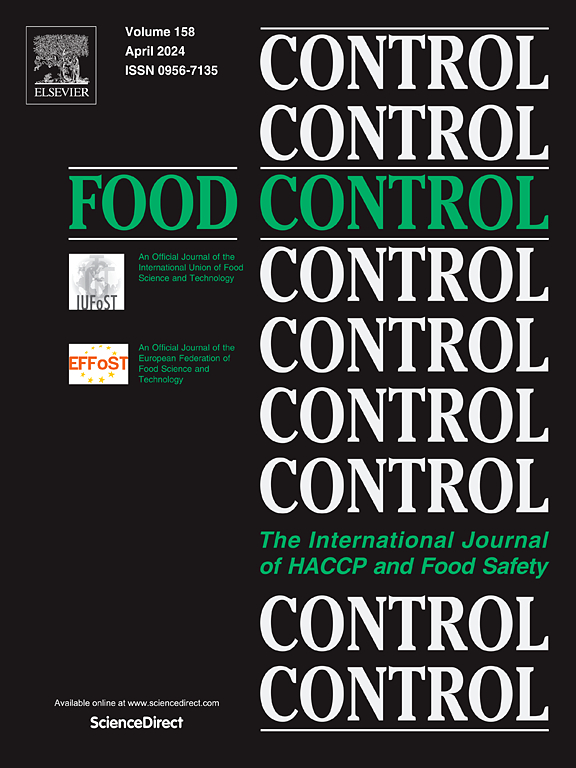Removal of aerosols from the air by seaweed cellulose nanofibers: To improve the authenticity of loop-mediated isothermal amplification for detection of pork adulteration
IF 5.6
1区 农林科学
Q1 FOOD SCIENCE & TECHNOLOGY
引用次数: 0
Abstract
Meat adulteration has attracted more and more attention from consumers. Loop-mediated isothermal amplification (LAMP) is a method that can be used to detect meat adulteration on the spot, quickly and without any instruments. Therefore, in this study, seaweed cellulose and β-CD were used as raw material to prepare aerogel materials capable of adsorbing aerosols, which were used in LAMP and qLAMP detection. LAMP and qLAMP detection were performed with pork-specific primers, the results showed that this material could effectively avoid the problem of false positives. Amplification occurred only with the pork DNA template, and the other four kinds of meat were not amplified. The LAMP and qLAMP assays were performed with different concentrations of the pork DNA template (100 ng/μL-1 fg/μL) to determine its sensitivity, and the results showed that 1 fg/μL of pork could be detected. By testing the experimental adulteration model prepared by mixing different proportions of pork (0.1%–20%) with beef and goat meat, the detection limit of the two methods was determined to be 0.1% pork. The aerogel material prepared in this study effectively prevent the contamination of aerosol in LAMP and qLAMP, ensuring the result accuracy. Based on this material, the detection sensitivity of LAMP and qLAMP is high, with a low detection limit, which has significant application potential in the field of meat adulteration detection.
求助全文
约1分钟内获得全文
求助全文
来源期刊

Food Control
工程技术-食品科技
CiteScore
12.20
自引率
6.70%
发文量
758
审稿时长
33 days
期刊介绍:
Food Control is an international journal that provides essential information for those involved in food safety and process control.
Food Control covers the below areas that relate to food process control or to food safety of human foods:
• Microbial food safety and antimicrobial systems
• Mycotoxins
• Hazard analysis, HACCP and food safety objectives
• Risk assessment, including microbial and chemical hazards
• Quality assurance
• Good manufacturing practices
• Food process systems design and control
• Food Packaging technology and materials in contact with foods
• Rapid methods of analysis and detection, including sensor technology
• Codes of practice, legislation and international harmonization
• Consumer issues
• Education, training and research needs.
The scope of Food Control is comprehensive and includes original research papers, authoritative reviews, short communications, comment articles that report on new developments in food control, and position papers.
 求助内容:
求助内容: 应助结果提醒方式:
应助结果提醒方式:


